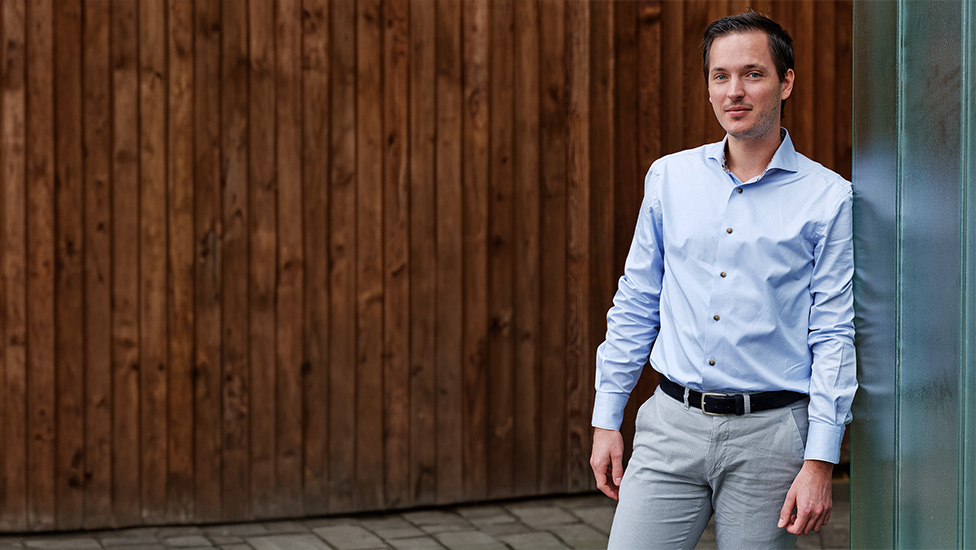Having joined Netherlands-based Bosman Bedrijven, part of VINCI Energies, in 2021 Tjerk Alewijn created his own role as R&D coordinator BIM. His work involves using several available tools and standards, and in the near future artificial intelligence to develop an intelligent, autonomous building modelling system.
Tjerk Alewijn is responsible for maintaining and designing the building modelling system within Bosman Bedrijven, which will be managed entirely by artificial intelligence (AI) in the future. R&D coordinator BIM at Bosman Bedrijven, a Dutch VINCI Energies business unit breaking new ground in Building Information Modelling (BIM), the 33-year-old engineer has been working on this ambitious project which seeks to take the way of working adopted by the company back in 2015 to a new level.
“ The BIM way of working, which is using Autodesk Revit as a tool, was originally launched to upgrade the method for managing and developing construction projects.” explains Tjerk. “Now, with data and AI, the aim is to make the model more intelligent and effective. By minimising human intervention, we can optimise workflow management in building design and thus considerably reduce turnaround times, costs and the environmental impact of projects.”
The sustainable development dimension of his job is a recurring theme for the engineer. “AI will eventually help save energy by reducing the time spent on the computer design of a BIM model to a few hours or even minutes. The process currently mobilises several people at their computers sometimes for more than three years, depending on the size of the project,” he points out. “It will eventually also help save raw materials by quickly being able to optimize the design and use of materials within the BIM models.”
New processes to be devised
It is no wonder then that, since the end of 2022, Tjerk has been part of the in-house project launched by Bosman Bedrijven to reduce its own carbon footprint. Six groups of Bosman Bedrijven employees are working on the three scopes of CO2 emissions at their company. Tjerk is dealing with scope 3 relating to indirect emissions, particularly those generated by suppliers. “We started carrying out a survey among our suppliers. It showed that although 25% of them are ahead on the subject, more than 50% are lagging behind.” It is a big challenge.
Alongside this internal task and the BIM project, Tjerk works on a daily basis to improve Bosman Bedrijven occupational safety, quality and sustainability processes. His job is also to explore ways to optimise the company’s organisational system in order to make it more efficient, again using data as the main lever.
“Helping develop at European level a construction-related AI model using a sustainable approach.”
All of these objectives are fully in line with his aspirations, given that he had the opportunity to create his own role. “After my course in industrial design engineering, I went through a recruitment and temporary employment agency, In Work, which at the time had ties with Bosman Bedrijven. At the end of my contract, Bosman asked me to join the company and to work together to design the job I would do based on future work processes. That’s how I became R&D coordinator BIM.”
Technical and personal skills
Such a new and cutting-edge role requires both technical and personal, particularly interpersonal, skills. At least that is what Tjerk found during his final-year projects at Delft University of Technology. At the end of his Bachelor’s degree, he helped to create the Lumo application intended for sick children in an oncology department to encourage them to move and to connect and interact with other patients in the hospital. And for his Master’s degree, he worked on a circular economy project aimed at turning old mattresses into insulation panels for buildings.
“These experiences taught me how critical to the success of the project it is to spend time gathering information at an early stage in the process and to fully understand the end need,” he explains. “Both requirements involve considerable powers of persuasion. In fact, storytelling is just as important as the factual or technical dimensions of the project.”
As far as the future is concerned, Tjerk hopes to keep working in this environment where data meets sustainability. “Following the start-up phase, currently under way with the development of an intelligent version of BIM, the aim is to work with other VINCI Energies entities like Axians and projectteams at the incubator from VINCI, Leonard, so as to move to the next step. The ultimate goal is to help develop at European level a construction-related AI model using a sustainable approach.”
All of this keeps our young engineer busy, but he still hopes to have enough time to teach his 2-year-old daughter to play the piano – his passion since the age of nine.
12/15/2023
